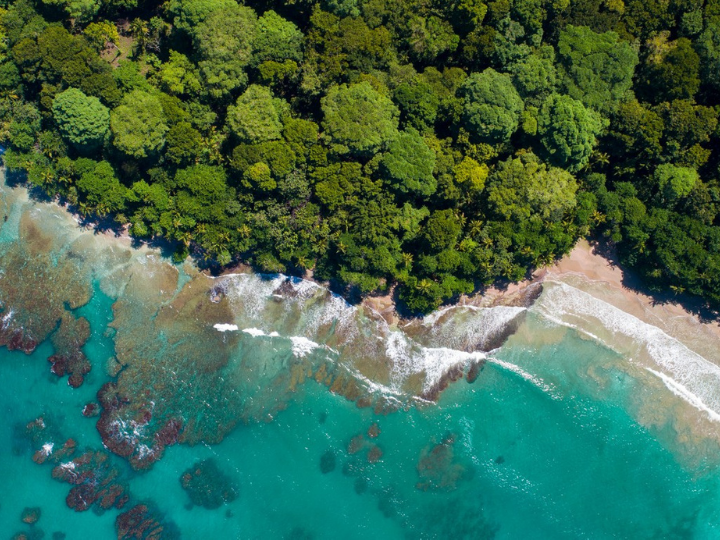by Carlos Manuel Rodriguez Echandi and Ibrahim Thiaw*
As the world continues to struggle with COVID-19, it is faced with urgent, intertwined crises: climate change, biodiversity loss, land degradation, pollution, and international debt. However, this also provides an unprecedented opportunity to collectively tackle these challenges, pivoting the world economy on a sustainable and resilient pathway.
Pre-pandemic, the external sovereign debt of developing countries had already reached $8 trillion, four times as much as 20 years before. This has only got worse as governments have had to borrow further to save their economies and meet increasing needs for spending on health and welfare, just as their income plunged along with falling commodity prices, exports and tourism. At least half of the world’s low-income countries are either in debt distress, or at high risk of it, and the World Bank has projected that up to 150 million more people will be driven into extreme poverty.
Simultaneously, our environment too is in unprecedented distress. According to the Intergovernmental Panel on Climate Change, the world has less than a decade left to limit warming to 1.5 degrees above pre-industrial temperatures – a target which, a new report by the secretariat of the UN Framework Convention on Climate Change demonstrates, the world is not on track to achieve.
At least 40% of global GDP depends on nature, which the World Economic Forum has pointed out is under no less stress. The Intergovernmental Science-Policy Platform on Biodiversity and Ecosystem Services (IPBES) has described how human activities have significantly altered three-quarters of the Earth’s land surface, reducing agricultural productivity on almost a quarter of it, and cumulatively impacted two-thirds of its ocean area. IPBES further highlights the threat posed by land degradation that affects the wellbeing of at least 3.2 billion people and cost more than 10% of the annual global GDP.
Diseases caused by air pollution cause some 6.5 million premature deaths each year and polluted water kills a further 1.8 million people, predominantly children.
These crises interact. Climate change, biodiversity loss, land degradation and pollution undermine economies. And rising debt often causes governments to overexploit natural resources to gain income, while imperilling action to control pollution, mitigate, and adapt to, global warming.
However, this vicious cycle can also be an opportunity for rethinking our economic model and its relationship with the planet. Despite promises to “build back better” most recovery programmes have fallen short. And sovereign debt markets lag in integrating environmental considerations into their operations.
The G20 has suspended official bilateral debt service repayments, but a full-scale restructuring will have to take place – and it must reap the double dividend of tackling the environmental crises. For the first time ever, there are now calls for a round of inclusive, green debt restructuring. The International Monetary Fund and the World Bank are working together on ways to factor fighting climate change into debt negotiations, and President Biden has pledged to provide “green debt relief” in his climate plan.
Back in the 1980s, debt for nature swaps were negotiated between governments, often with NGOs as a third party, whereby repayment obligations were reduced when the debtor nation spent the savings for conservation. Thirty-nine developing countries benefited: Costa Rica was a pioneer, using the funds to enlarge natural parks and reserves and promote eco-tourism among other measures.
But, valuable as they were for ensuring conservation, these swaps were on much too small a scale for today’s crisis. Their value totalled around $2.6 billion between 1985 and 2015, a tiny amount compared to present indebtedness and sustainability challenges. Furthermore, they tended to tie spending of the proceeds to environmental measures, while today’s indebted countries are calling for help to fund healthcare, reduce poverty, plug their huge fiscal gaps, and fuel recovery.
So, attention is turning to developing new instruments. The Finance for Biodiversity Initiative, for example, has devised Nature Performance Bonds, a more flexible evolution of the old swaps, through which countries could have their debt payments reduced and use the savings on pressing priorities, as long as they also achieve measurable and monitored environmental outcomes, e.g. Biodiversity Targets, Land Degradation Neutrality Targets, Nationally Determined Contributions. Pakistan is planning to pilot such a bond this year.
Nature Performance Bonds are much more scalable than debt for nature swaps – and they are unlikely to be the only new financial instrument to be developed to tackle the interlinked crises: the UN Economic Commission for Africa, for instance, is working on ways of providing immediate debt relief and liquidity while developing a medium-term green investment strategy.
A major international effort is needed, and it will have to be coordinated and standardized if it is to be efficient and effective. So a Working Group on Nature and Debt has been examining how this should be done. Convened by the Finance for Biodiversity Initiative and comprised of representatives of international organisations, multilateral development banks, NGOs and others, it has proposed a Nature and Climate Sovereign Bond Facility.
This is the year in which we must act decisively, and practically, to tackle these four great challenges in a holistic way and thus build a more sustainable world that people now demand. We must grasp this historic opportunity with both hands, mind and heart.
*Chief Executive Officer and Chairperson, Global Environment Facility and UN Under-Secretary-General and Executive Secretary , United Nations Convention to Combat Desertification
**first published in: www.weforum.org




 By: N. Peter Kramer
By: N. Peter Kramer
